Every Sierra graphical adventure game, ranked
How I spent 1.5 months beating the long-dead corpse of my childhood.
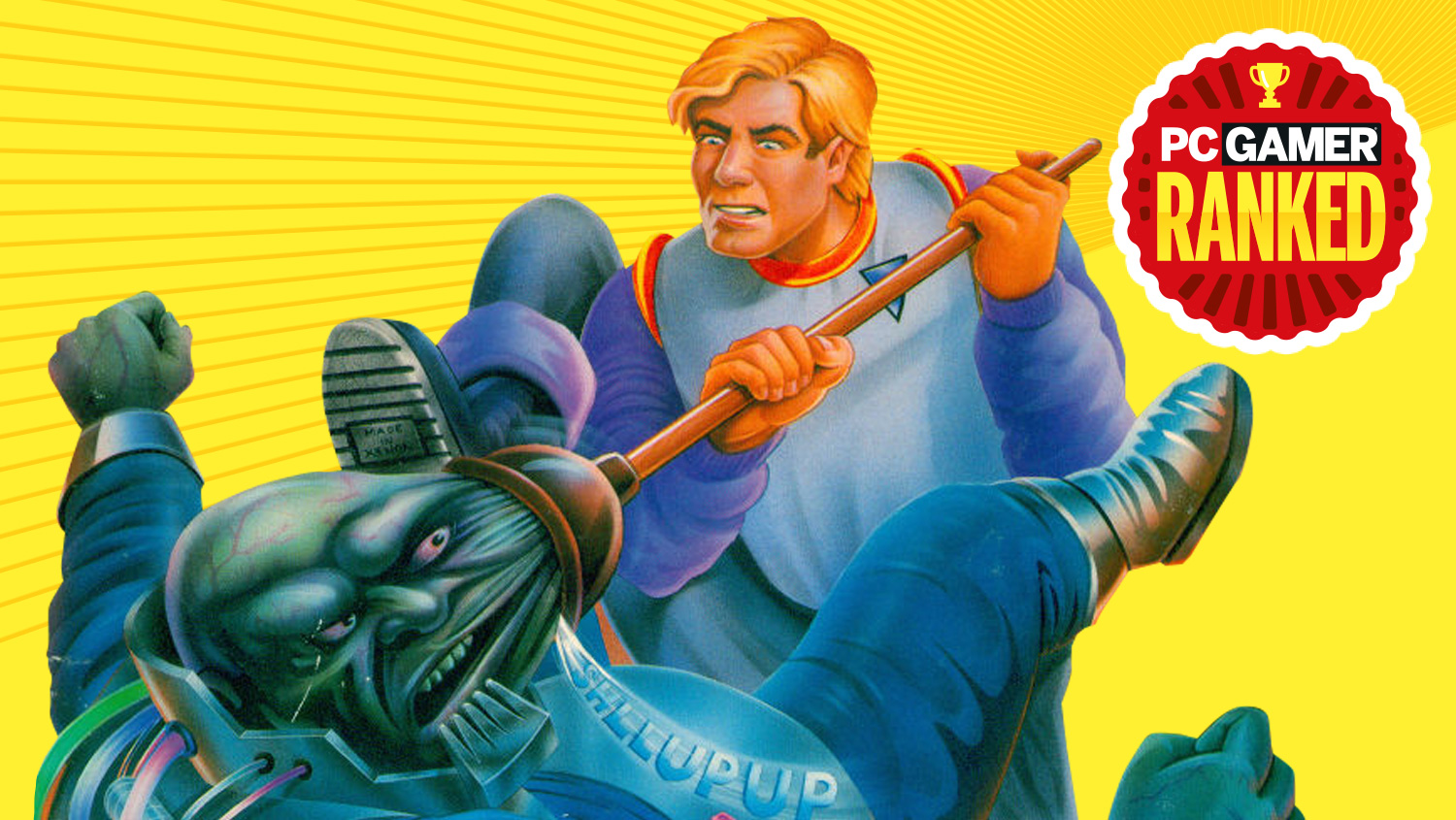
PC Gamer Ranked are our ridiculously comprehensive lists of the best, worst, and everything in-between from every corner of PC gaming.
Even as a lifelong admirer of Sierra, which defined a huge part of my childhood, putting this list together was difficult. For starters, it involved confronting iffy writing choices that seemed funny when you were 10, and much less so when you’re 36. For another, it was really tough to evaluate games that had brought me so much joy as a kid, or games that I remember with rose-colored glasses, against a rubric of any kind.
Playing every Sierra graphic adventure was sort of like when your mom catches you smoking cigarettes and forces you to inhale an entire pack in one go to teach you a lesson. Oh, digging into one Gabriel Knight game felt good, but replaying three in a row (especially Blood of the Sacred, Blood of the Damned) was an ordeal. It was definitely a huge challenge to even get some of them running—thank god for emulators—on a newer machine.
I've tried to evaluate these as a whole, with the benefit of hindsight, taking innovation and technology into account.
The Criteria
Number of entries: 63
What's included: Graphical adventures that were developed by Sierra, including Sierra's experimental 3D graphics games from the late '90s. Sierra's adventure-oriented edutainment games, too.
What's not included: Games that weren't actually developed by Sierra (no Manhunter, sorry). First-person perspectives. There was never a Leisure Suit Larry 4, and Quest for Glory 5 is very much an RPG. I considered Ruins of Cawdor, but its multiplayer nature didn’t fit a list dominated by singleplayer games. Donald Duck's Playground didn't make the cut—it has no real adventure or narrative elements. I also condensed certain releases/versions of games into one entry, where there were only minor changes that didn't substantially affect gameplay or narrative. I included the AGD Interactive remakes which had an official license, but not the Infamous Adventures remakes (sorry, IA folks—you did a great job!).
Keep up to date with the most important stories and the best deals, as picked by the PC Gamer team.
63. Police Quest 4: Open Season
(1993)
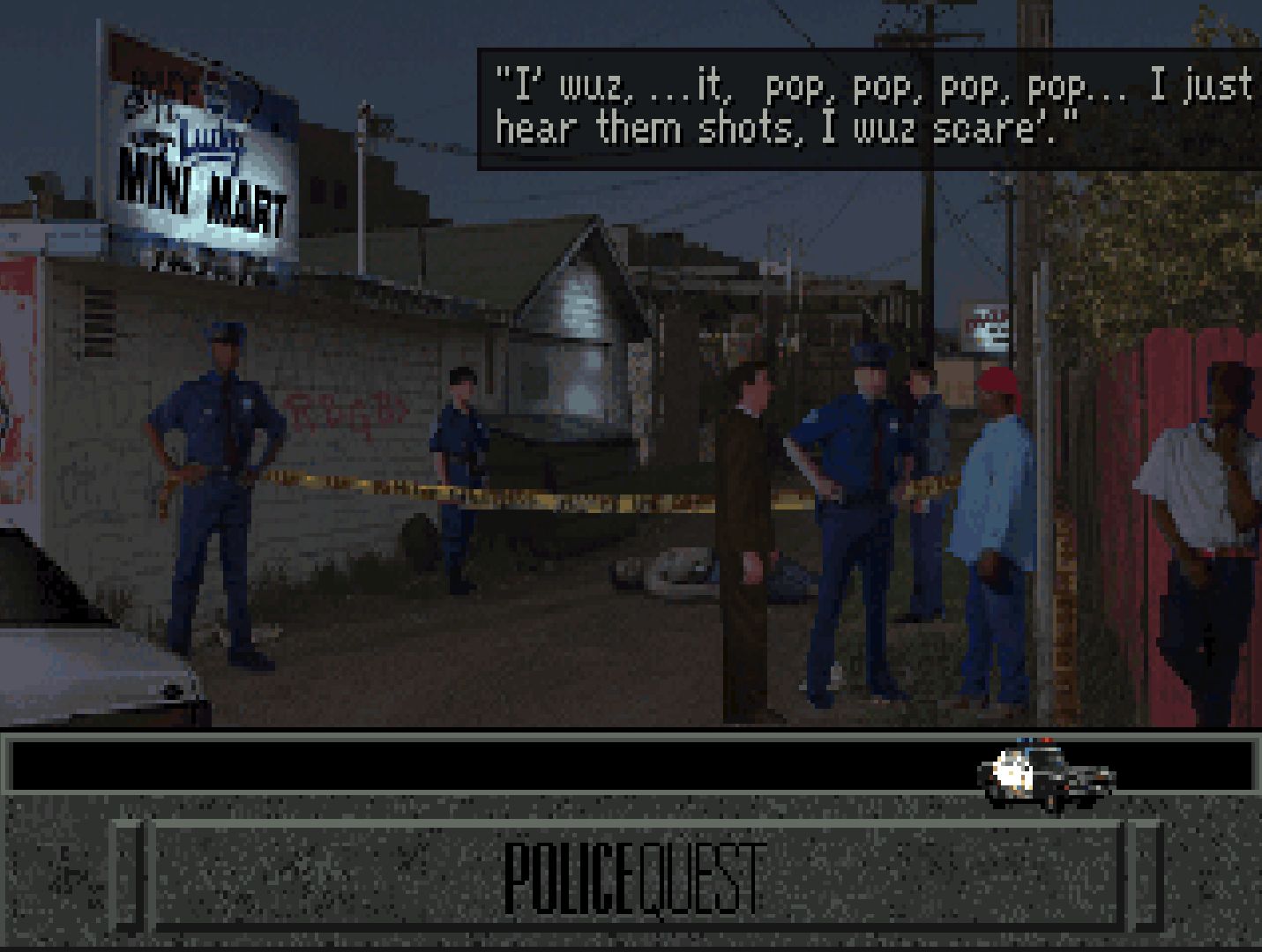
What better way to begin than with a game Sierra should never have made—Police Quest 4, designed by someone who should never have been allowed to make it. Daryl F. Gates was presented as the author of the game, but most of it was actually designed and written by Sierra staffer Tammy Dargan; it was Dargan who was responsible for a lot of the racial caricatures in the game. But the spotlight was on Gates, the disgraced ex-LAPD chief who was responsible for the 1992 LA riots and the police attack on Rodney King.
With PQ4, Jim Walls' wholesome "cops are your friends" brand of copaganda goes totally out the window (not that it was great to begin with) and is replaced with a vastly more insidious beast that villainizes Black Americans to the point of parody. And to an extent, Gates' videogame legacy still lives on today, as Ken Williams defended his decision to hire Gates in his recent memoir. There's a lot to say about this game, most of which has already been said in this piece by Duncan Fyfe. At best, and I'm being generous, it was a boneheaded attempt to romanticize and rehabilitate the LAPD's brutal image. And it is downright painful to play. From the cop camaraderie and constant in-game promotion of Gates' own initiatives (Gates created SWAT and the DARE programs) to the misogynistic, transphobic ending, this is a game that should not exist, yet remains a weird touchpoint for specific Sierra die-hards and police zealots who venerate its place in history.
62. Mission Asteroid
(1980)

It seems cruel to judge a game made at the very dawn of an entire art/tech form—it first appeared on the Apple II in 1980—but there really wasn't a lot going on here.
61. Ulysses and the Golden Fleece
(1981)
A fine 8-bit walking simulator with marginally more nuanced use of pixels than Mission Asteroid.
60. Cranston Manor
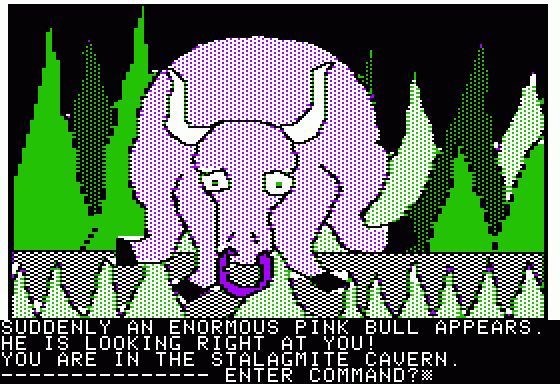
(1981)
Robbing the rich in full 8-bit glory. The game was based on a piece of interactive fiction by Larry Ledden, who failed to get credit. It was, quite unsurprisingly, janky as hell, with one notable bug that actually skips you over a room in the manor. At this point in adventure gaming, it was critical to have a manual to set the tone for your imagination, even if the manual only had one piece of art, and that is… very much the case with Cranston Manor.
59. Police Quest 3: The Kindred
(1991)
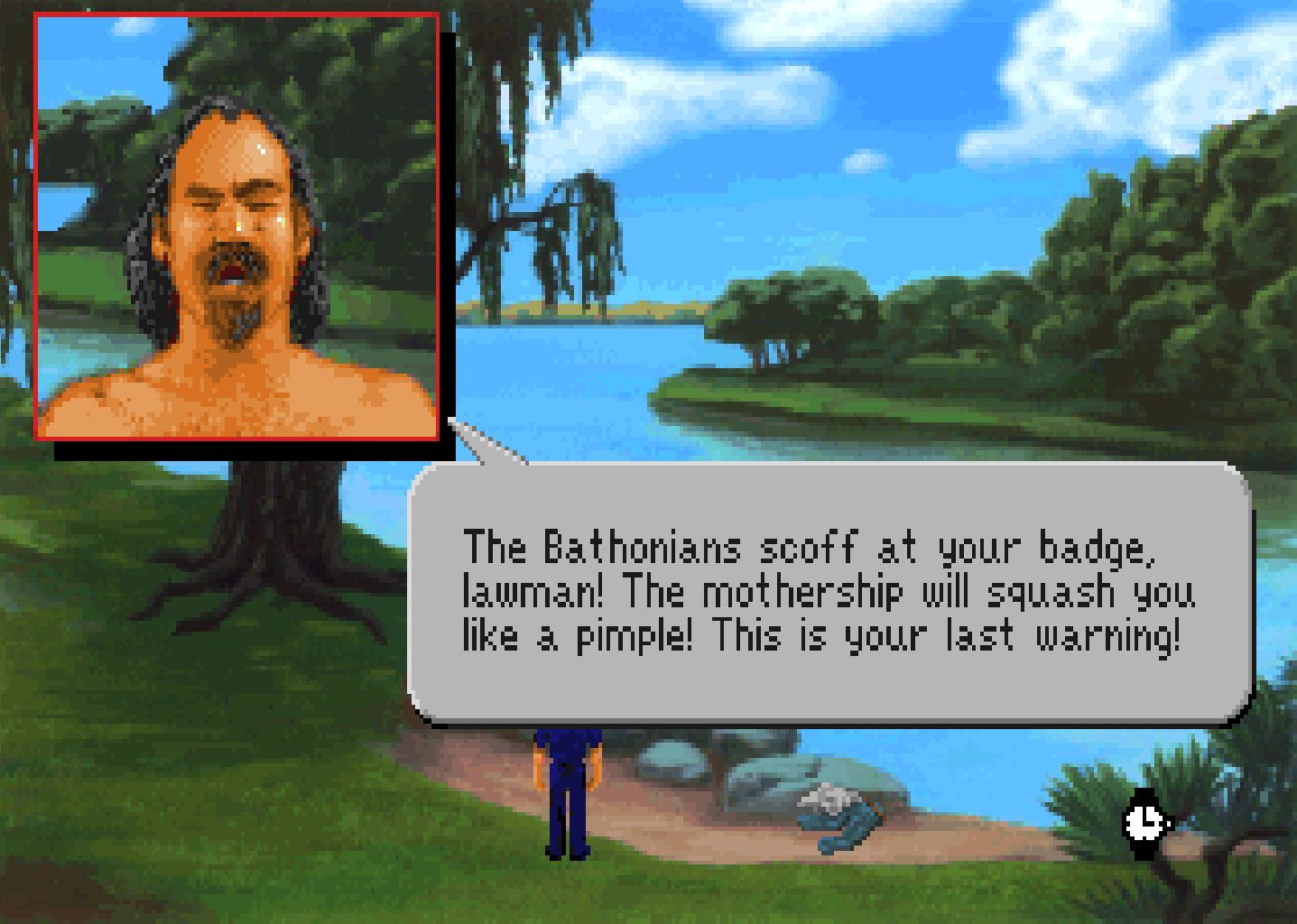
Point-and-click makes all the tedious procedural bits only slightly easier, but it also wades into deep copaganda-filled waters, even more so than its predecessors. The intro features designer Jim Walls—an ex-highway patrol officer—sternly espousing the virtues of police work like a warped after-school special. Now a sergeant, you have to deal with subordinates, and one of your cops (a lady cop, oh my) is receiving complaints about misconduct on the job. Real good stuff. Then you have to go out to a lake and whip out your baton on a mentally unstable naked man on drugs. Also, why would you want to bring back the tedious procedures that the previous game so wisely eliminated?
58. Codename: Iceman
(1989)

Codename: Iceman is what you get when you let a cop go wild and write a romanticized CIA Cold War story. The highlights all take place in the beginning when your character is on shore leave at a Tahitian beach resort. There's awkward dancing, awkward volleyball-playing, and even awkward off-screen sex. It also features the greatest instance of copyright protection in Sierra history: Performing CPR on an NPC according to commands in the user manual.
The rest of the game is thanklessly set in a submarine and involves a lot of tedious ice-breaking. Nope.
57. Police Quest: In Pursuit of the Death Angel
(EGA, 1987)
I hated, and still hate this game. Cops, please don't try and make your job cute. It's not.
56. Police Quest: In Pursuit of the Death Angel
(VGA, 1992)
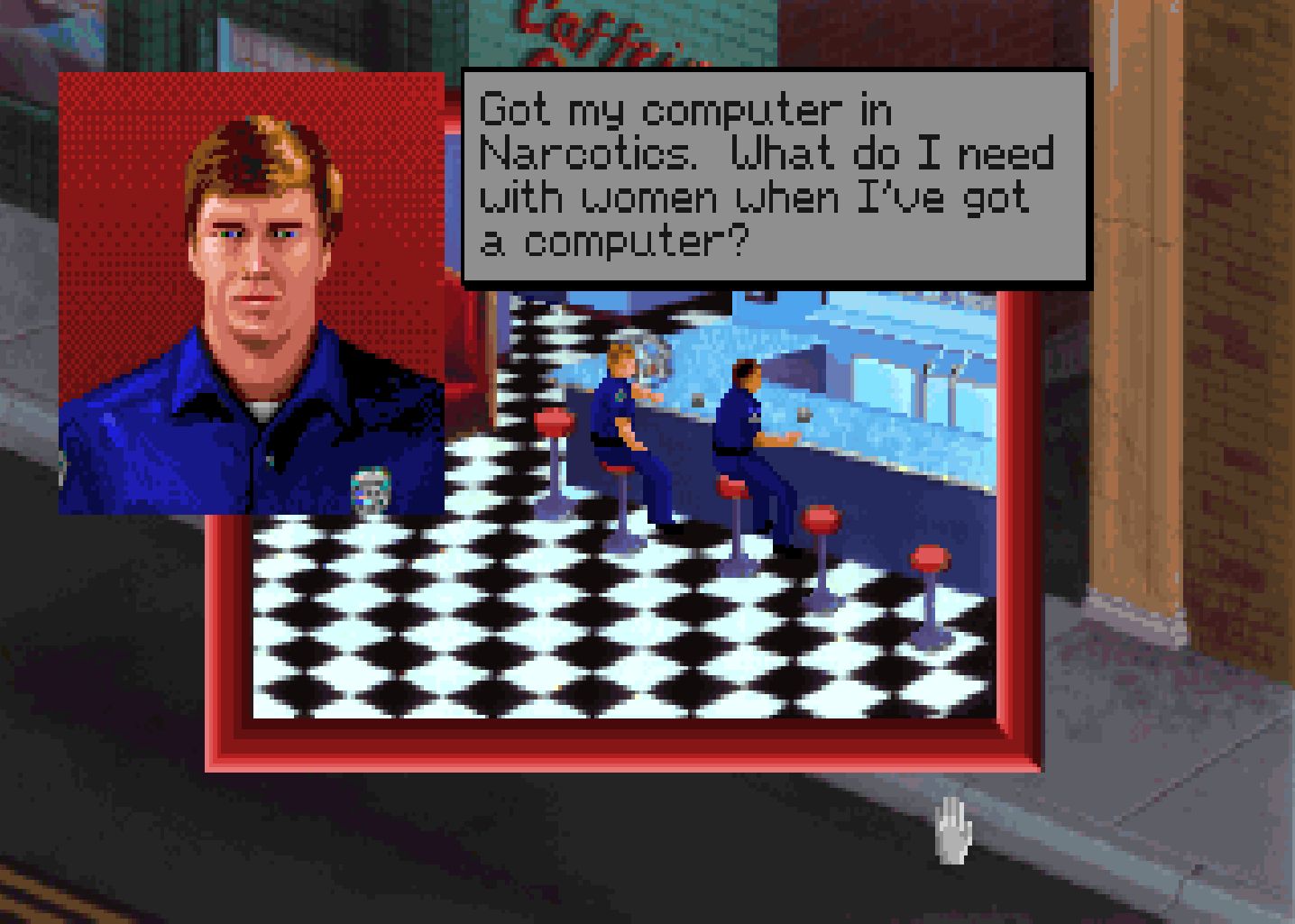
The VGA release is marginally better than the original version because of the improved graphics and sound. There's still that cringeworthy spiel in the beginning about how the town of Lytton's "high moral values" and thinly veiled race-baiting about how culture and "progress" haven't spoiled its people. There's a brief text screwup at Carol's diner where Sonny refers to his pal Steve as Keith, who only becomes his partner in the sequel. And the penalties for not performing cop procedure minutiae were withering. Forgetting to walk around your patrol car to inspect it before driving off? Give me a break.
55. Freddy Pharkas: Frontier Pharmacist
(1993)
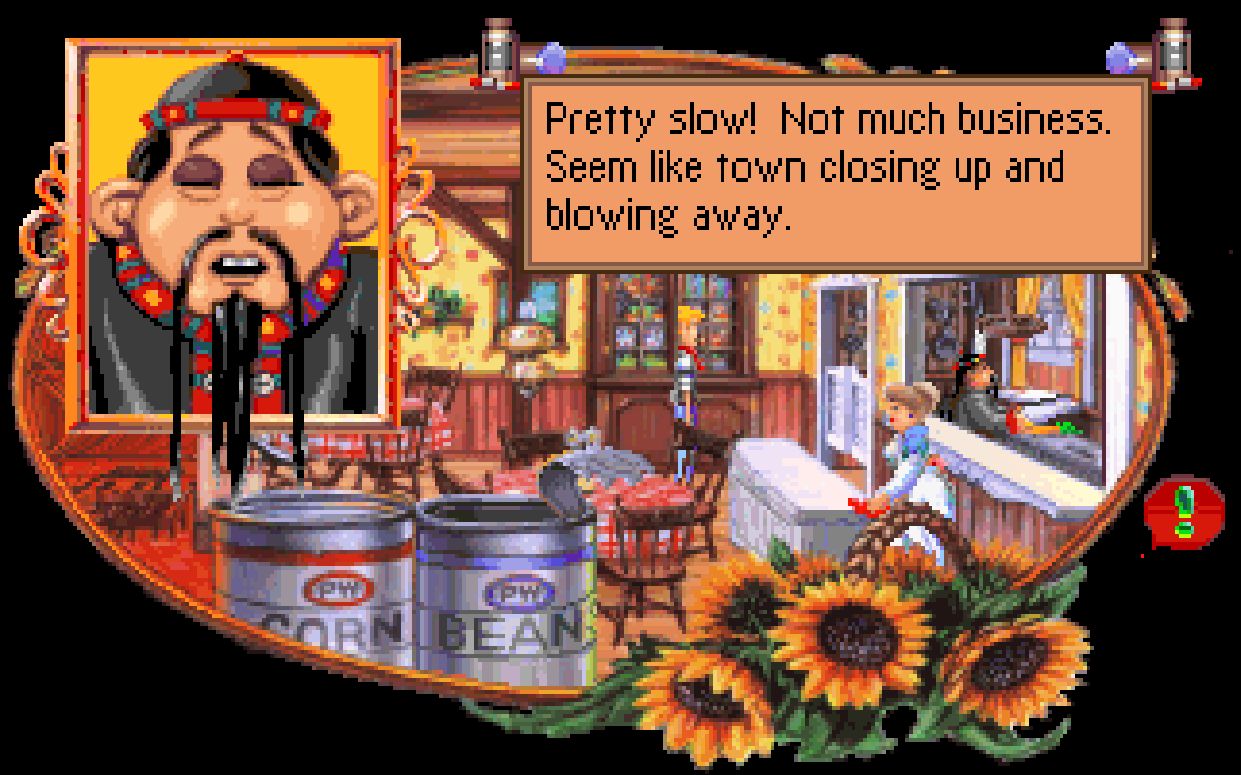
Freddy Pharkas is silly and it knows it. If you're into sleazy dad jokes and crude humor, or if you really miss going to Cracker Barrel, this is a game for you, with a slit-eyed Chinaman thrown in for some light '90s racism. The premise gives you a pretty good idea of what to expect—Freddy was once a famed gunslinger, but after getting his ear shot off, quietly runs a pharmacy in a podunk town with a shady sheriff. You absolutely need the game manual handy for the medicine-mixing parts. But is anyone going to play this besides aging white men? Probably not. Some fantastic voice actors from notable '90s cartoons though—a few of the greats included Michael Gough who played Deckard Cain (Diablo), the prolific Lewis Arquette, Kath Soucie (Space Jam, Tiny Toons) and Cam Clarke who played Leonardo and Rocksteady in TMNT.
54. Leisure Suit Larry 3: Passionate Patti in Pursuit of the Pulsating Pectorals
(1989)

The LSL series doesn't pretend to be anything but tacky, offensive fun, which is probably one of the few things it has going for it—what you see is generally what you get. But LSL3 also comes with an in-your-face "prepare to be offended, snowflake" disclaimer, which makes it painfully, exhaustingly self-aware of its own tastelessness.
53. Police Quest 2: The Vengeance
(1988)
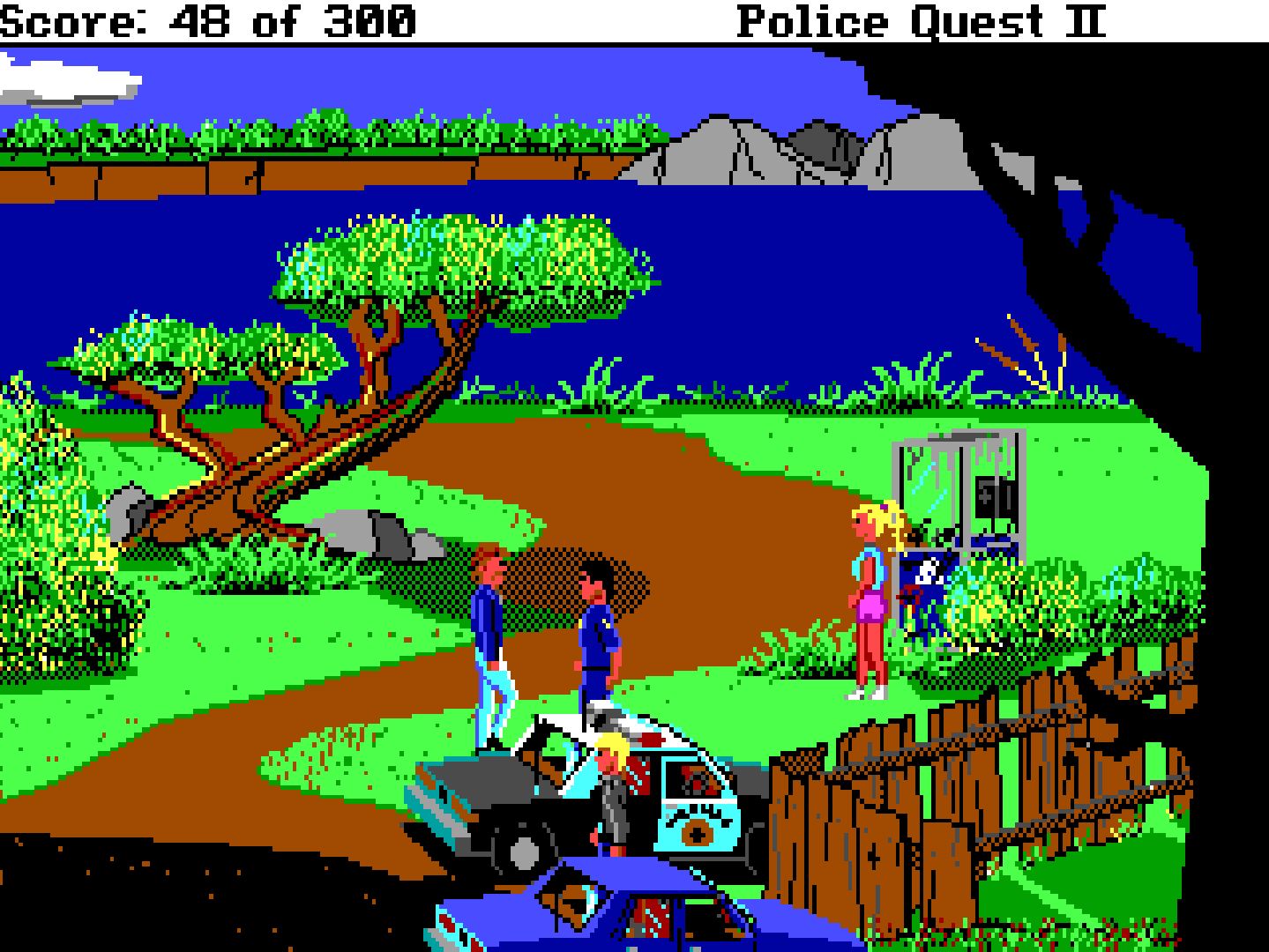
Corny Miami Vice-style aesthetics and pixelated mullets are the only balm to having to play as a gung-ho cop. Oh, and the streamlined driving mechanics, less reliance on "by the book" procedure, and marginally better writing. At the end of the day, PQ still boils down to cop cosplay trying its best to exude an earnest Yogi Bear "public service" vibe.
52. Winnie the Pooh and the Hundred Acre Wood
(1985)

Look, at this point in time there wasn't much going for kids' video games. An early version of the "match misplaced objects" premise that Sierra nailed in Mixed-Up Mother Goose, but with loads of text and not much actual screen time for the characters. It was probably cool to map out the Hundred Acre Wood, though.
51. Mickey's Space Adventure
(1986)
It's a game for kids, but with a surprising lot of text blocks… for kids. Is a parent supposed to narrate these?
50. Leisure Suit Larry 7: Love for Sail!
(1996)
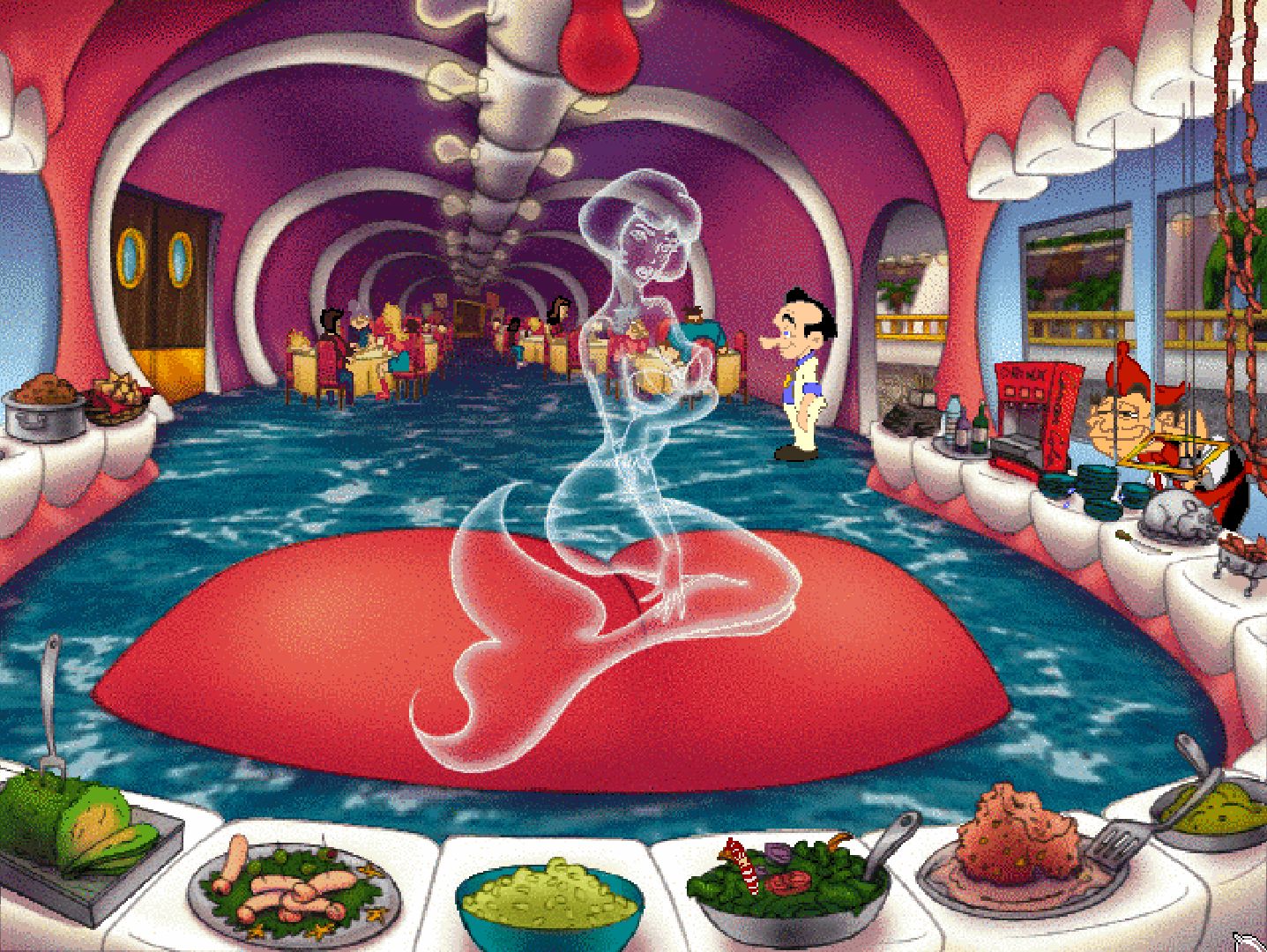
Another journey into straight-up sleaze with a modicum (sorry) of "story," as Larry is, once again, back on a very horny cruise. It's the same LSL formula, reheated with a new crew of Jessica Rabbit-esque women in the mid-90s hand-drawn Sierra style and a running find-the-dildo mini-game (they look like little phallic Where's Waldos). You can finally see loads of tiddies, which really took a while considering that this entire franchise was made for weird middle-aged men.
There's a lot more overt sex. You can shit and fart with abandon, thanks to the chaotic hybrid point-and-click system that also features a text parser. And yes, it's all still pretty sad. On the upside, there's some cool art—the statue of Venus' toes made of dice, and the mermaid ice sculpture in the giant mouth-themed dining room are kitschy treasures.
49. Leisure Suit Larry 5: Passionate Patti Does a Little Undercover Work
(1991)
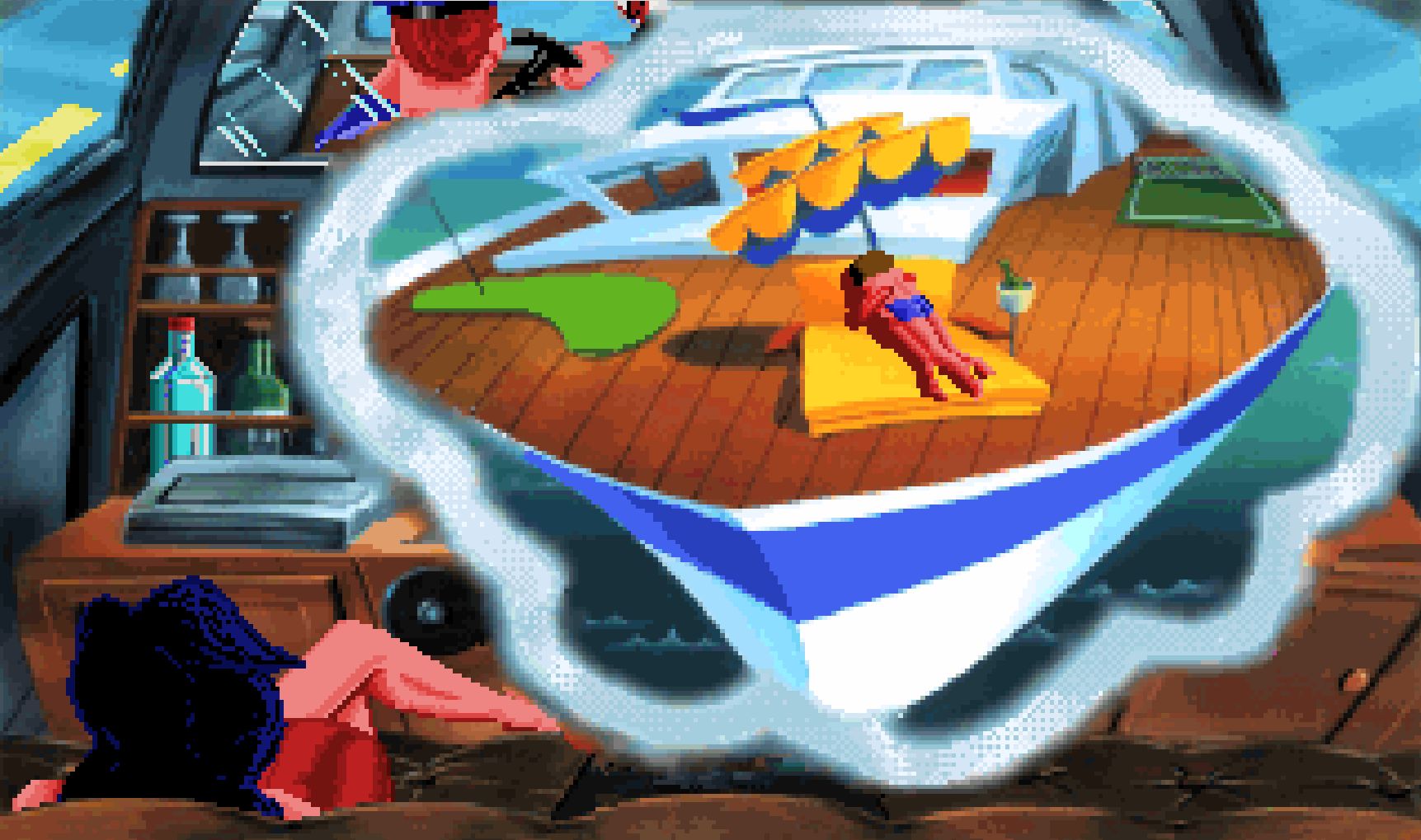
Hurray for point-and-click, and whatever the opposite of that is for the plot of LSL5. Sure, it's nice being able to play Patti, and the art style is distinctly an early '90s angular special (channeling a bit of Maniac Mansion) that adds a zany flavor to the typically sleazy Larry story. Still, the window dressing isn't quite enough to redeem this game from the usual pitfalls that the series is known for. Patti also fantasizes about canoodling with "Tramp" on a yacht. Donald Tramp. Nuff said.
48. Mixed-Up Mother Goose
(1987, 1990, 1991, 1995)

The first videogame I ever played. It's pretty cool how simple they made the interface for kids—no text parser or even the need to manage a multi-item inventory—just one item at a time, which you had to match to the appropriate character. Later versions made it easier to get around with an overview and map, a visual UI, and new audio and voice work. (This entry combines the original 1987 MS-DOS release with the Enhanced 1990 version, CD-ROM 1991 version, and Deluxe version in 1995, which featured new music and graphics.)
47. The Black Cauldron
(1986)

It came, it saw, it played… fine, considering that you had to use function keys to do things (ugh). One of the earliest adventure games with multiple possible endings, and considering how it was marketed as a kids' game, it's interesting that you could die. I'd rather watch the film.
46. King's Quest 2: Romancing the Throne
(1985, 1987)
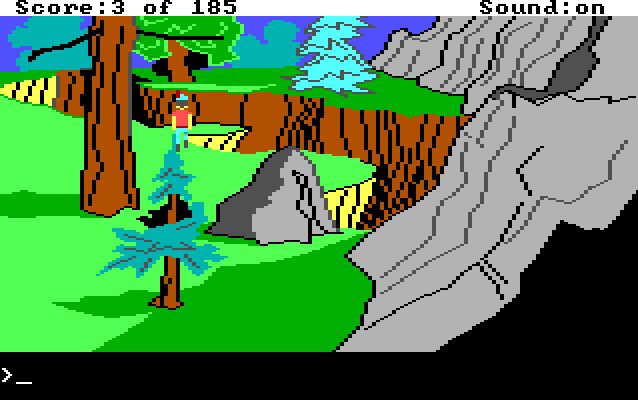
The first of the King's Quest "find the girl in the mysterious tower" tropes, but an important step in Daventry canon. It's pretty funny to see Graham face magical peer pressure to get married, even though the game manual tries to create a real reason for his sudden matrimonial biological clock. Dips its toe into "darker" fantasy elements (Dracula, werewolves, and cults)—a nice foreshadowing of Quest For Glory 4's more horror-oriented theme. (This entry also includes the 1987 version with EGA support for DOS.)
45. King's Quest 1: Quest for the Crown
(1990)
Ah yes, the dreaded SCI remake. Considered by fans as the failson of the series because of its fancy new look. In retrospect, surprising no one familiar with videogame discourse, it's safe to say that people probably overreacted at the time.
44. Space Quest 6: Roger Wilco in the Spinal Frontier
(1995)
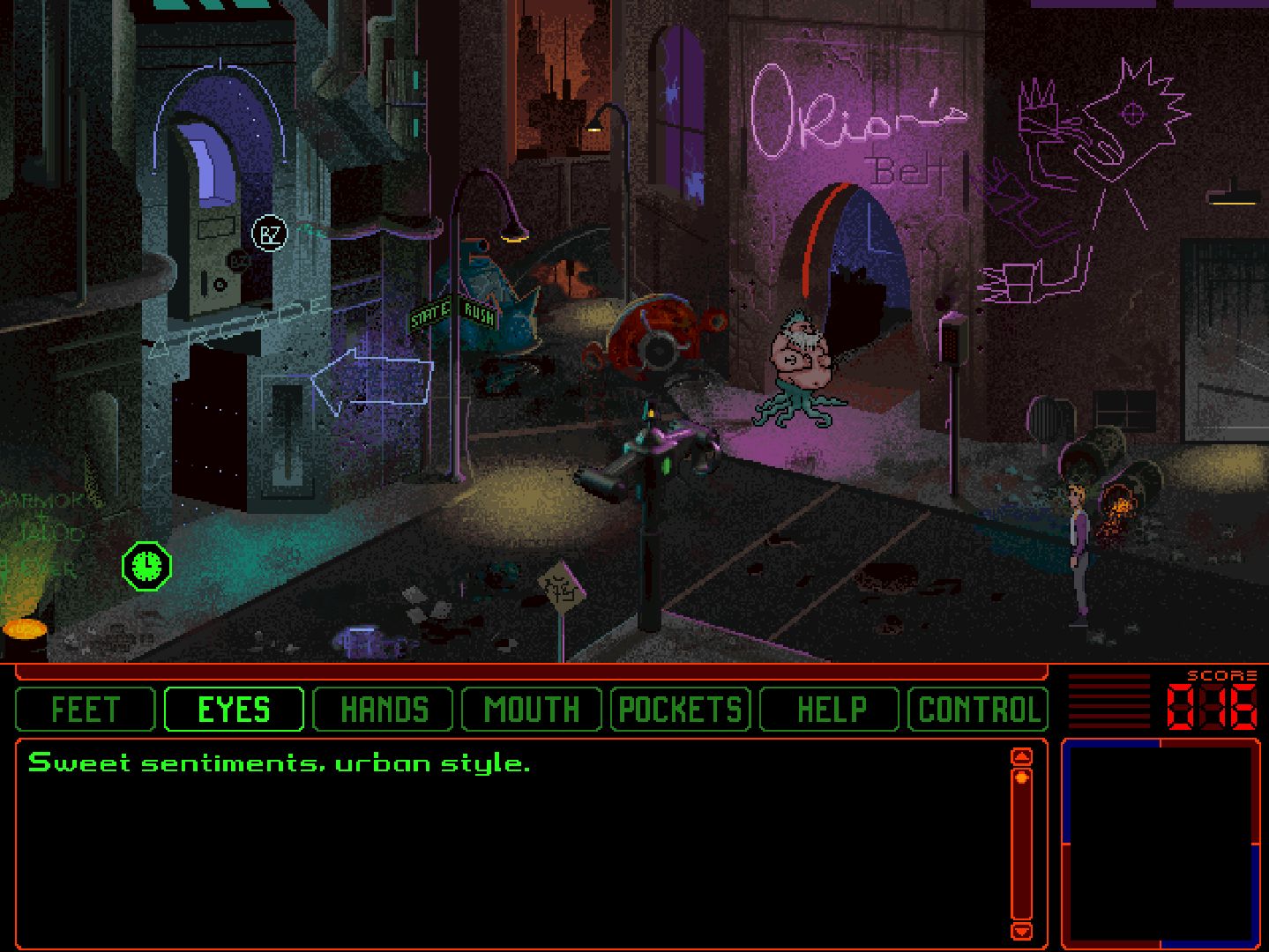
Not Roger's finest moment, perhaps because of internal development drama. The writing isn't nearly as strong as SQ4 or 5, and the puzzles are dull. The environments and character designs are full of fun details, though (Nigel's bedroom on Polysorbate LX reminds me of those new lo-fi girl memes floating around today) with a cameo by the lovable Fester Blatz from Phleebut (Space Quest 3). Bonus for the little jab at Deep Space Nine.
43. Quest for Glory 2: Trial by Fire
(1990)

For old-school RPG devotees who like pain, QFG2 was probably manna from heaven. But for the rest of us, the simple act of getting around Shapeir was death by a thousand cuts. Reaching the money changer is a war crime without the map and game manual. The game is also rigidly structured so there's little freedom to wander around (in the first one, at least you could go noodle around in the forest without much fuss). As with many other Sierra games, it's full of references to its siblings, including the bastard antwerp from the first QFG. Even the final city's name, Raseir, is an anagram of "Sierra" as a parodic wink. No, I didn't have fun.
42. Gold Rush!
(1988)
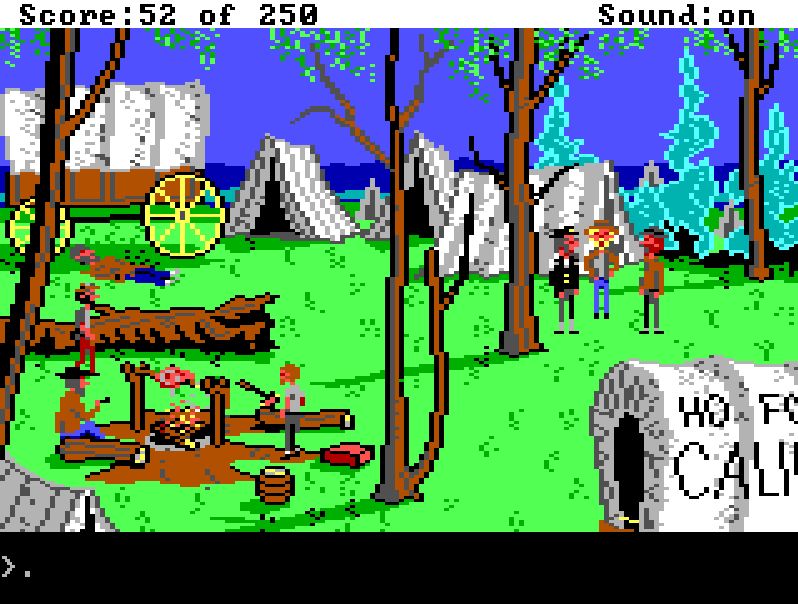
Sierra's equivalent of Oregon Trail is a fixed linear narrative mixed with historical edutainment. Timing matters, like selling your Brooklyn house before the gold rush tanks property prices, or deciding when to head west by maniacally watching mud dry. The journey by stagecoach, which was all I could afford, is mostly a vehicle for history snippets and misery. Even in tiny pixelated form, the game's protagonist Jerrod exudes big Brooklyn hipster energy, especially when he starts off in his little striped shirt and devolves into a scruffy beardo on the trail. Nothing to write home about, but an oft-overlooked game in the Sierra stable.
41. Gabriel Knight 3: Blood of the Sacred, Blood of the Damned
(1999)
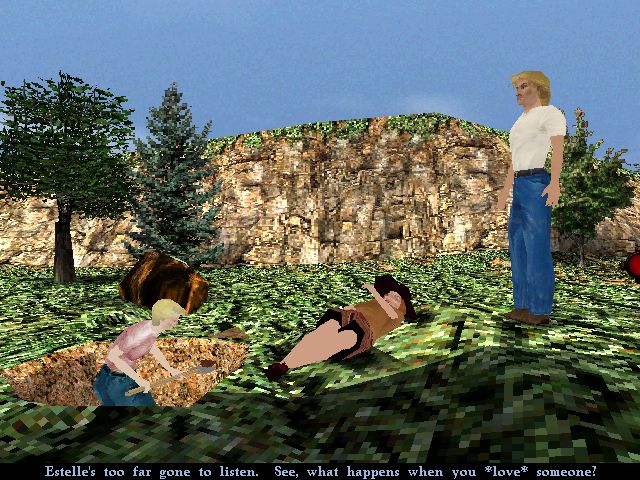
I wanted to like it more, but god, it was hard to overlook… so much. From the sadistic movement mechanics to the eye-watering graphics choices, it takes a real dedicated love of the Gabriel Knight franchise to get through this one. Don't get me started on the cat mustache puzzle. On the upside, Tim Curry is back as Gabriel (although Dean Erickson did great in The Beast Within), which helps make it more bearable, and Grace's strong characterization places her on equal footing with Gabriel. The voice acting overall is superb, and the history and research put into the writing is, as with all Gabriel Knight games, really impressive. The packaging though? Not so much.
40. King's Quest 2: Romancing the Stones
(2002, AGD Interactive remake)
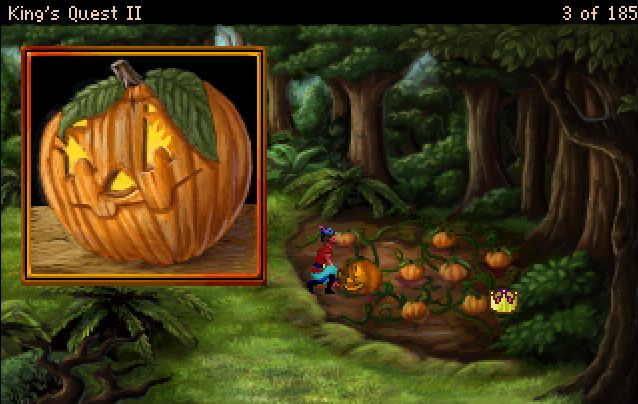
A fun reimagining of the original that adds more content (including a bunch of fan service and Easter eggs, along with some thoughtful changes) but done true to the Sierra tone and style. It also adds a bit more nuance to the characters, especially Caldaur (Dracula) and the supporting cast.
You can get a quick glimpse of Connor, the hero of King's Quest 8, at the end of the game. It's comforting to hear Josh Mandel reprise his role as King Graham (from KQ5 and 6).
39. Leisure Suit Larry: Land of the Lounge Lizards
(1987, 1991)
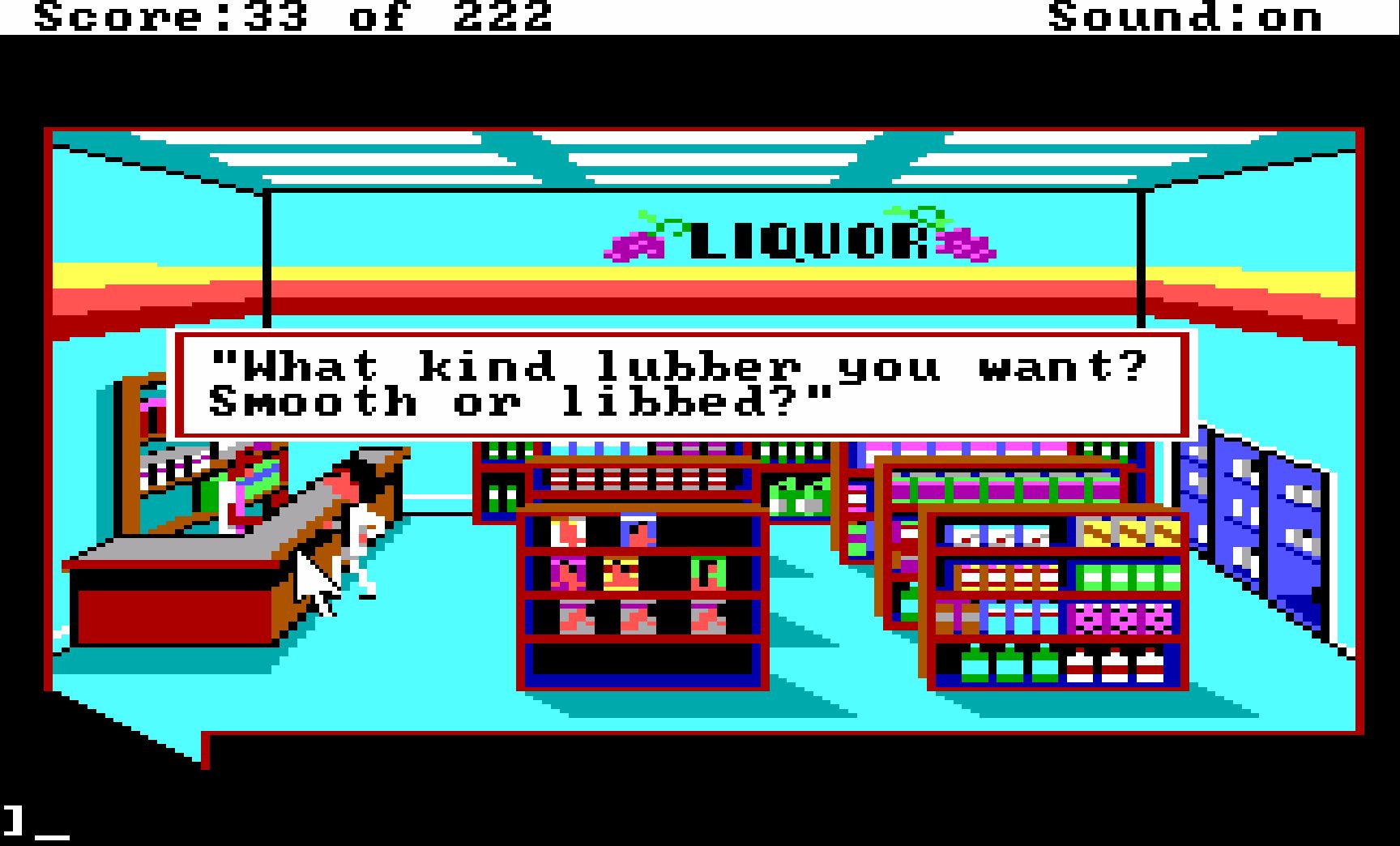
Before the 40-Year-Old Virgin, there was Leisure Suit Larry (and before Larry, there was Softporn Adventure, but I digress). While it was undoubtedly a big hit among men, growing up and watching a middle-aged man play it, then playing it myself was mostly just kind of sad. Even with all the jokes at Larry's expense, the game (and the entire franchise) leans way too hard on offensive humor for the sake of crudeness and no real finesse. Sure, risqué humor is fun, but when you plant that particular seed and it grows into a never-ending parade of thinly veiled racist stereotypes and tedious airhead jokes, things get old real fast. Especially when you consider there wasn't a lot else going on in 1987—it's hard to imagine a whole lot of places would be throwing awards at LSL today just for "showing some skin." I guess it's nice to remember that it meant a lot to its demographic back then? (This entry also includes the 1991 VGA version.)
38. Quest for Glory 3: Wages of War
(1992)
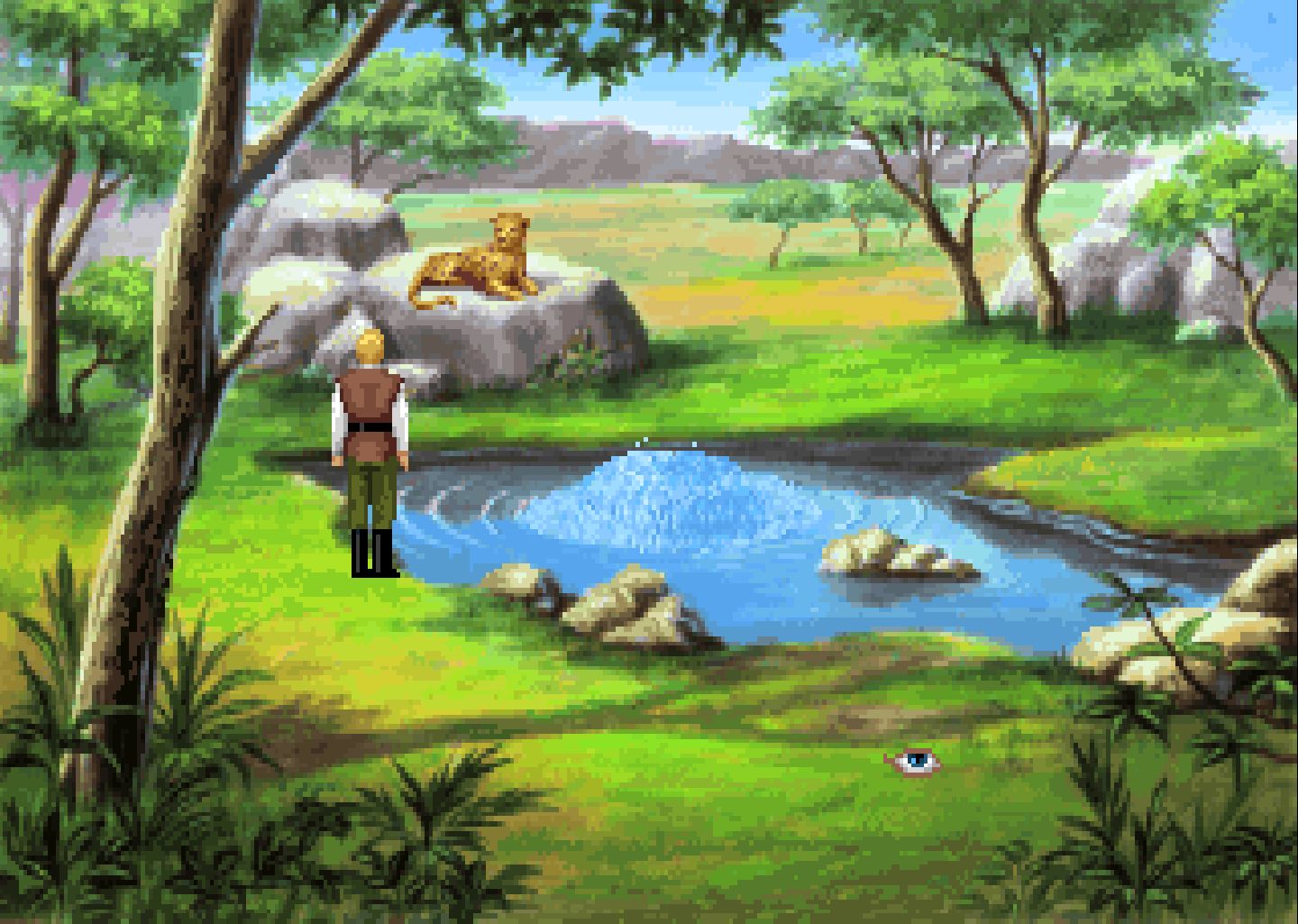
Yet another exotic environment, this time with new hybrid animal species on the continent of Fricana. Gone is the text parser, and while I consider this a plus, haters at the time didn’t like the shift to point-and-click (to be fair, in the late 1880s people were afraid of cars).The art is a clear step up from QFG2, which was supposedly the last EGA game Sierra made. Lots of fun flavor dialogue amongst the merchants in the Tarna bazaar—and the city of Tarna itself was beautifully designed. The rest of Fricana is markedly less elaborate, and the random combat encounters were a real crapshoot. It was also rather unbalanced for a thief class character which made thieves' gameplay noticeably duller than the fighter or mage.
Bonus: you can pet the cheetah at the spring, and it will purr.
37. Wizard and the Princess
(1980)

This is where it all began, really. There isn't much to say besides the fact that we wouldn't have a lot of Sierra adventures without this game, and that we've come a long, long, LONG way in graphics. (This entry also includes the IBM port, which was called Adventure in Serenia.)
36. King's Quest Classic
(1983/1984)
The first, very simple IBM PCjr version of King Quest before it became Sierra's darling.
35. Leisure Suit Larry 2: Looking for Love (In Several Wrong Places)
(1988)
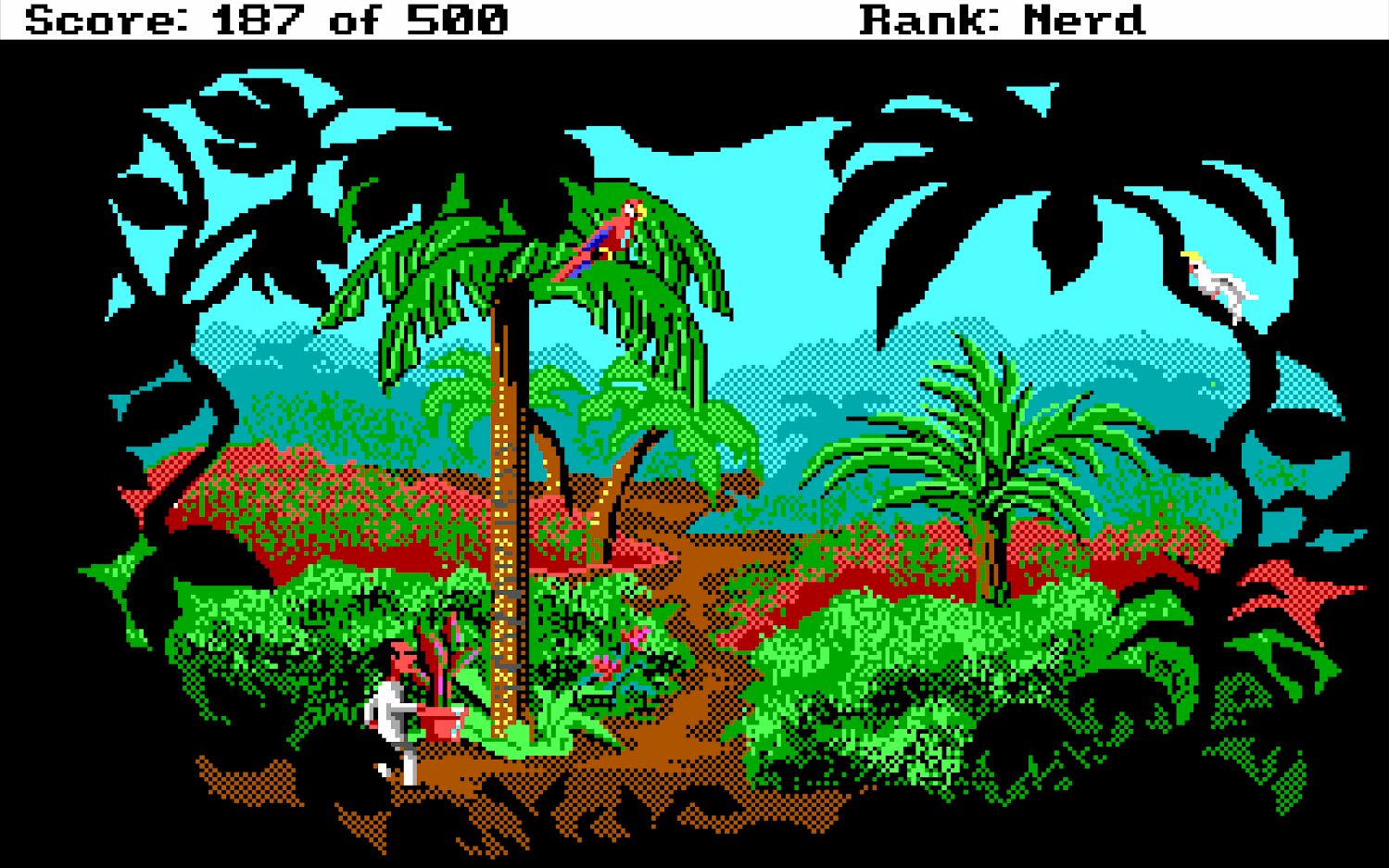
Larry is marginally less of a lech in LSL's sophomore effort, and instead follows a more hapless "wrong man" story trope as he accidentally gets sucked into a KGB plot. Like its predecessor, the game revels in hacky racial stereotypes, awkward chauvinism, and pretty standard Larry fare. Besides all of that, it's… fine? Some of the LA scenes are pleasantly nostalgic and the KROD gameshow sequences are appropriately painful to watch. I still don't care for the jungle sequence though. That can stay in 1988.
34. King's Quest 1: Quest for the Crown
(2001 Tierra Entertainment/AGD Interactive remake)
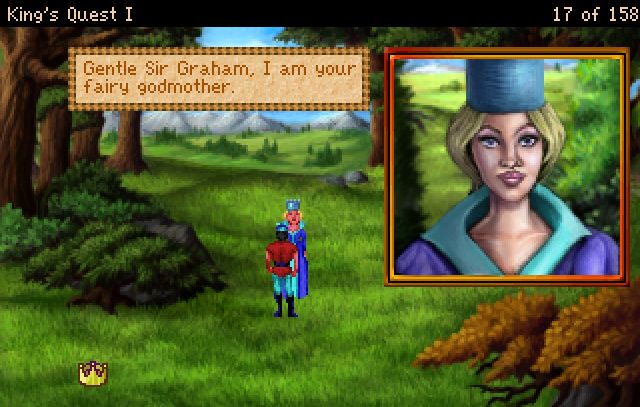
The first AGD Interactive remake for KQ, based on the point-and-click experience and aesthetics of KQ5 (also featuring Graham). Once again we have Josh Mandel in his iconic turn as Graham—lots of nice improvements in playability (catching the condor is still a bitch, though) although changes in the map threw me off, initially. But a heroic effort by the design team to replicate that sweet Sierra greenery (a minor obsession of mine when it comes to old VGA games).
33. Mixed-Up Fairy Tales
(1991)

Fetch-quest for kids, but Sierra-style. Fulfilled a lot of childhood fantasies about getting sucked into a book, and honestly, had some lovely background art (1990s Sierra consistently did great topiary and greenery scenes, and you can really see it shine at the Beast's house).
32. Eco Quest: The Search for Cetus
(1991)
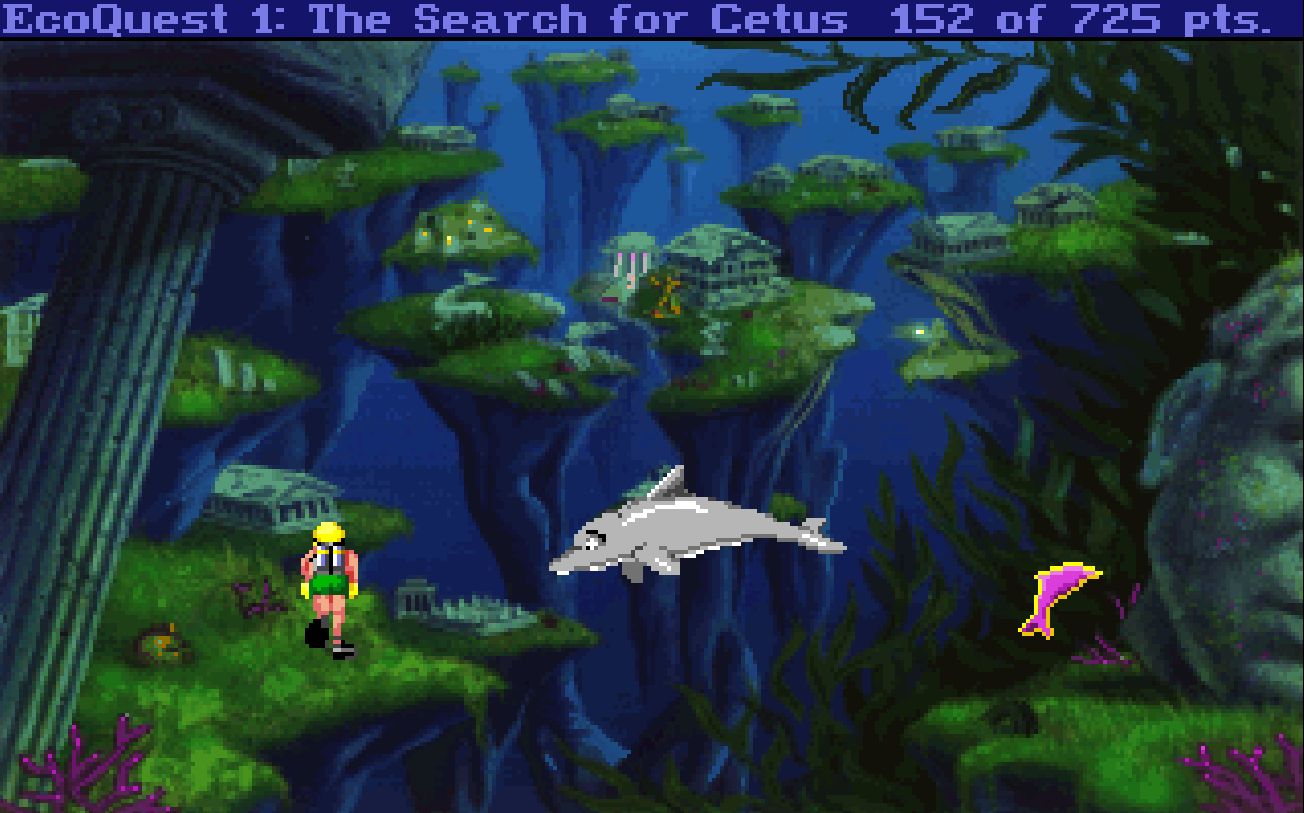
Blissfully unproblematic, wholesome edutainment for the whole family, with a whole cast of endearing sea creatures and striking artwork in the underwater scenes.
31. Mystery House
(1980)

The murder mystery graphical adventure that started it all. It was pretty much Roberta's take on Agatha Christie and required a bit of imagination, but back in 1980 it was considered a marvel in the world of adventure games. Like many early adventures, it was mostly a whole lot of "going" and "looking," but its claustrophobic setting—discover the killer, or possibly be killed—in graphic form was a hit.
Jump to Page 2

Alexis Ong is a freelance culture journalist based in Singapore, mostly focused on games, science fiction, weird tech, and internet culture. For PC Gamer Alexis has flexed her skills in internet archeology by profiling the original streamer and taking us back to 1997's groundbreaking all-women Quake tournament. When she can get away with it she spends her days writing about FMV games and point-and-click adventures, somehow ranking every single Sierra adventure and living to tell the tale.
In past lives Alexis has been a music journalist, a West Hollywood gym owner, and a professional TV watcher. You can find her work on other sites including The Verge, The Washington Post, Eurogamer and Tor.

